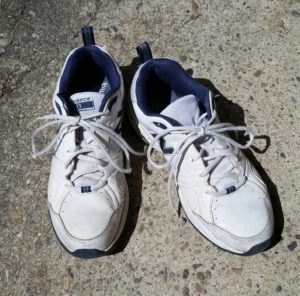 Exercise is the Fountain of Youth? Note that they could not come up with a biomarker of aging in these active people. From Medical Xpress;
Exercise is the Fountain of Youth? Note that they could not come up with a biomarker of aging in these active people. From Medical Xpress;
Exercise allows you to age optimally
Staying active allows you to age optimally, according to a study by King's College London and the University of Birmingham. The study of amateur older cyclists found that many had levels of physiological function that would place them at a much younger age compared to the general population; debunking the common assumption that ageing automatically makes you more frail.
The study, published in The Journal of Physiology, recruited 84 male and 41 female cycling enthusiasts aged 55 to 79 to explore how the ageing process affects the human body, and whether specific physiological markers can be used to determine your age.
Cyclists were recruited to exclude the effects of a sedentary lifestyle, which can aggravate health problems and cause changes in the body, which might appear to be due to the ageing process. Men and women had to be able to cycle 100 km in under 6.5 hours and 60 km in 5.5 hours, respectively, to be included in the study...Participants underwent two days of laboratory testing at King's. For each participant, a physiological profile was established which included measures of cardiovascular, respiratory, neuromuscular, metabolic, endocrine and cognitive functions, bone strength, and health and well-being. Volunteers' reflexes, muscle strength, oxygen uptake during exercise and peak explosive cycling power were determined.
The results of the study showed that in these individuals, the effects of ageing were far from obvious. Indeed, people of different ages could have similar levels of function such as muscle strength, lung power and exercise capacity. The maximum rate of oxygen consumption showed the closest association with age, but even this marker could not identify with any degree of accuracy the age of any given individual, which would be the requirement for any useful biomarker of ageing.
In a basic, but important test of function in older people, the time taken to stand from a chair, walk three metres, turn, walk back and sit down was also measured. Taking more than 15 seconds to complete the task generally indicates a high risk of falling. Even the oldest participants in the present study fell well below these levels, fitting well within the norm for healthy young adults.
Overall, the study concluded that ageing is likely to be a highly individualist phenomenon...The main problem facing health research is that in modern societies the majority of the population is inactive. A sedentary lifestyle causes physiological problems at any age. Hence the confusion as to how much the decline in bodily functions is due to the natural ageing process and how much is due to the combined effects of ageing and inactivity."
"In many models of ageing lifespan is the primary measure, but in human beings this is arguably less important than the consequences of deterioration in health. Healthy life expectancy - our healthspan - is not keeping pace with the average lifespan, and the years we spend with poor health and disabilities in old age are growing."
Emeritus Professor Norman Lazarus, a member of the King's team and also a cyclist, said: "Inevitably, our bodies will experience some decline with age, but staying physically active can buy you extra years of function compared to sedentary people. Cycling not only keeps you mentally alert, but requires the vigorous use of many of the body's key systems, such as your muscles, heart and lungs which you need for maintaining health and for reducing the risks associated with numerous diseases."
